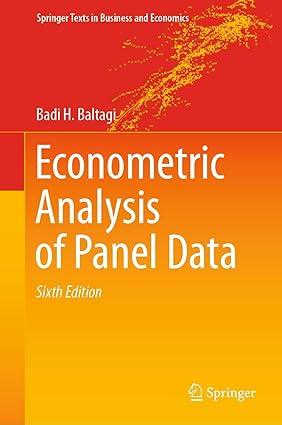An LM test for heteroskedasticity in a one-way error component model. Holly and Gardiol (2000) derived a
Question:
An LM test for heteroskedasticity in a one-way error component model. Holly and Gardiol (2000) derived a score test for homoskedasticity in a one-way error component model where the alternative model is that the \(\mu_{i}\) 's are independent and distributed as \(N\left(0, \sigma_{\mu_{i}}^{2}ight)\) where \(\sigma_{\mu_{i}}^{2}=\sigma_{\mu}^{2} h_{\mu}\left(F_{i} \theta_{2}ight)\). Here, \(F_{i}\) is a vector of \(p\) explanatory variables such that \(F_{i} \theta_{2}\) does not contain a constant term and \(h_{\mu}\) is a strictly positive twice differentiable function satisfying \(h_{\mu}(0)=1\) with \(h_{\mu}^{\prime}(0) eq 0\) and \(h_{\mu}^{\prime \prime}(0) eq 0\). Show that the score test statistic for \(H_{0} ; \theta_{2}=0\) is equal to one half of the explained sum of squares of the OLS regression of \((\hat{s} / \bar{s})-\iota_{N}\) against the \(p\) regressors in \(F\) as in the Breusch and Pagan test for homoskedasticity. Here \(\hat{s}_{i}=\hat{u}_{i}^{\prime} \bar{J}_{T} \hat{u}_{i}\) and \(\bar{s}=\sum_{i=1}^{N} \hat{s}_{i} / N\) where \(\widehat{u}\) denote the maximum likelihood residuals from the restricted model under \(H_{0} ; \theta_{2}=0\).
Step by Step Answer:






